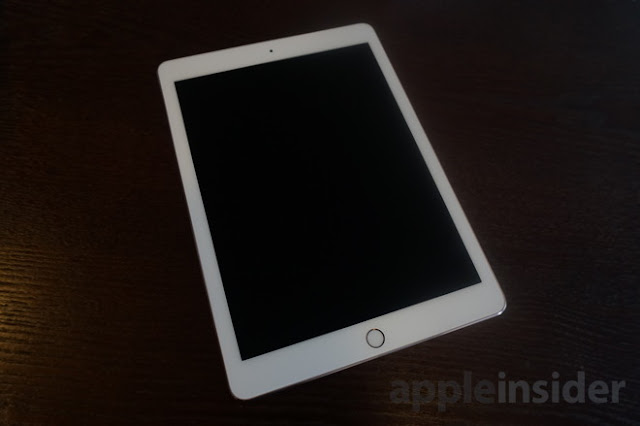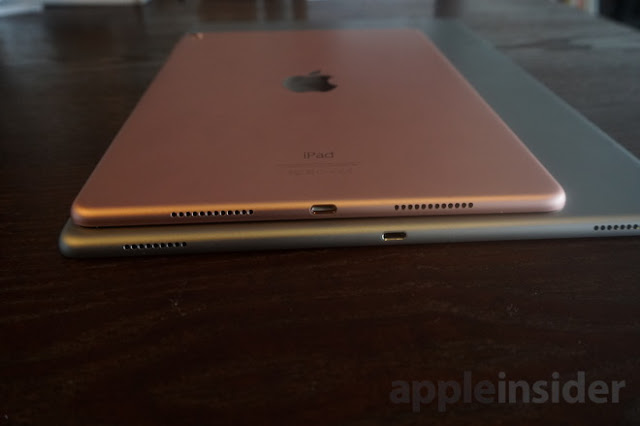Review: Apple's 9.7" iPad Pro is professional-grade, powerful & pricey
16:44After being neglected in 2015, Apple's 9.7-inch iPad has received a much-needed professional makeover, gaining key features from the 12.9-inch iPad Pro and even outperforming it in a few ways. It's a substantial upgrade, and one we find absolutely worthy of the "Pro" moniker, though the $599 starting price may deter some buyers.
What is it?
When the first iPad was announced in 2010, it came in one size: 9.7 inches. Though other models have since joined the fray, Apple has always returned to the 9.7-inch form factor as its flagship model. The company has done that once again in 2016.
The new 9.7-inch iPad Pro adds Apple's Smart Connector for portable, magnetically attachable accessories (like the Smart Keyboard), as well as a four-speaker system and a faster A9X processor. It also boasts the best Retina display Apple has ever put on a mobile device, thanks to glare reduction and new True Tone technology.
It also carries a new, higher starting price of $599 for 32 gigabytes, and there's a new rose gold color option.
Who's it for?
Tablet lovers who want more input options from Apple's iPad. Artists and note takers. Cutting edge early adopters.
Though Apple has pitched the 9.7-inch iPad Pro as a PC replacement, iOS isn't quite at that level of capability — yet — especially for power users. Still, we think there's a sizable portion of the computing market who would happily get by, and perhaps be even more productive, with the iPad Pro.
Design and hardware
Upon setting up the new iPad Pro, one of the first things you'll notice is the new True Tone display. Using built-in sensors, the smaller iPad Pro adjusts the colors on the display, allowing you to see colors as they're meant to be seen, regardless of ambient light conditions.
Paired with an improved glass cover that reduces glare even further, Apple has made what was already a stunning Retina display and improved it. Not even the 12.9-inch iPad Pro has this feature, and it definitely shows when both devices are displayed side by side in bright conditions.
Paired with an improved glass cover that reduces glare even further, Apple has made what was already a stunning Retina display and improved it. Not even the 12.9-inch iPad Pro has this feature, and it definitely shows when both devices are displayed side by side in bright conditions.
While they won't beat a pair of headphones, the four-speaker array on the iPad Pro pumps out impressive sound for such a small device. These are on par, if not better than, pretty much any laptop speakers you've ever heard.
Despite these changes, Apple has managed to retain the same form factor as the previous-generation iPad Air 2, though the Pro does have an unsightly camera bump on the back. That's because the iSight camera has seen a major upgrade — a 12-megapixel lens that matches the iPhone 6s and iPhone SE, and outperforms the 12.9-inch iPad. It also features True Tone flash for the first time ever in an iPad.
We're happy to say that the camera bump on the iPad Pro does not cause the device to rock at all when it is flat on a table. That doesn't excuse its aesthetics, however.
The front camera also shoots at 5 megapixels, and features Apple's Retina Flash.
Like the larger iPad, the 9.7-inch iPad Pro also brings Apple's Smart Connector into the fold. Its inclusion is welcome and helps to make the iPad Pro a more suitable laptop replacement, though the smaller 9.7-inch form factor does place some constraints on keyboard size.
The front camera also shoots at 5 megapixels, and features Apple's Retina Flash.
New input options
Like the larger iPad, the 9.7-inch iPad Pro also brings Apple's Smart Connector into the fold. Its inclusion is welcome and helps to make the iPad Pro a more suitable laptop replacement, though the smaller 9.7-inch form factor does place some constraints on keyboard size.
Considerably smaller than the Smart Keyboard of the full size 12.9 inch iPad Pro, the compact Smart Keyboard designed exclusively for the 9.7-inch iPad Pro seems like it should be harder to type on that it actually is. It's about 90 percent of the width of the larger model (or Apple's standard MacBook or USB Bluetooth Keyboard), so if feels more cramped, especially for users with big hands.
However, we found touch typing on the smaller Smart Keyboard to feel quite natural. What's more of a stretch is when you lift your fingers off the home row of keys and try to touch type. If you're used to a standard keyboard, hunt and peck typing seems to require more adjustment. It's also takes some time to adjust to the shift key when typing mixed capitalization; the shift key (along with control, option and command keys) are all tighter than your fingers expect, making key combinations require more thought than basic typing.
















0 comments